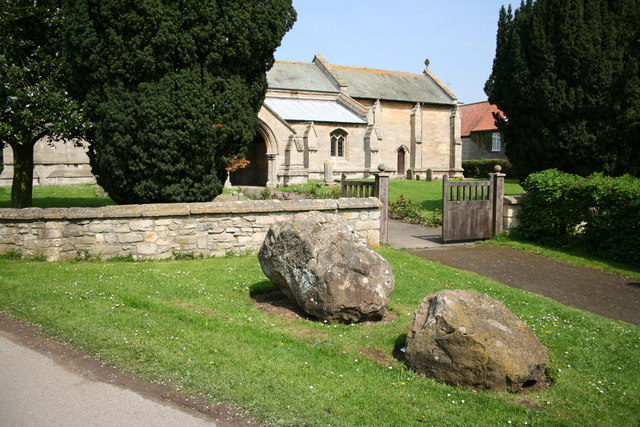The Drake Stones
Introduction
The photograph on this page of The Drake Stones by Richard Croft as part of the Geograph project.
The Geograph project started in 2005 with the aim of publishing, organising and preserving representative images for every square kilometre of Great Britain, Ireland and the Isle of Man.
There are currently over 7.5m images from over 14,400 individuals and you can help contribute to the project by visiting https://www.geograph.org.uk

Image: © Richard Croft Taken: 8 May 2006
Two lumps of Spilsby sandstone by the gate to St.Edith’s church known as “The Drake Stones” … actually a glacial erratic, but with a considerably more interesting Lincolnshire folk tale explanation. Long ago, a man ploughing a field north of the church saw his horses and plough mysteriously disappear into the ground and a dragon (drake) flew out. Next day when the villagers returned to the spot they found a stone shaped like a drakes head and thought there must be treasure beneath it. Unable to move it, the stone remained there for centuries until the 19th century when local intellectuals Dr.Oliver and Rev.Hazelwood used a traction engine to drag it to the church. It was during this relocation that the stone broke and became “The Drake Stones”.

